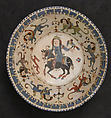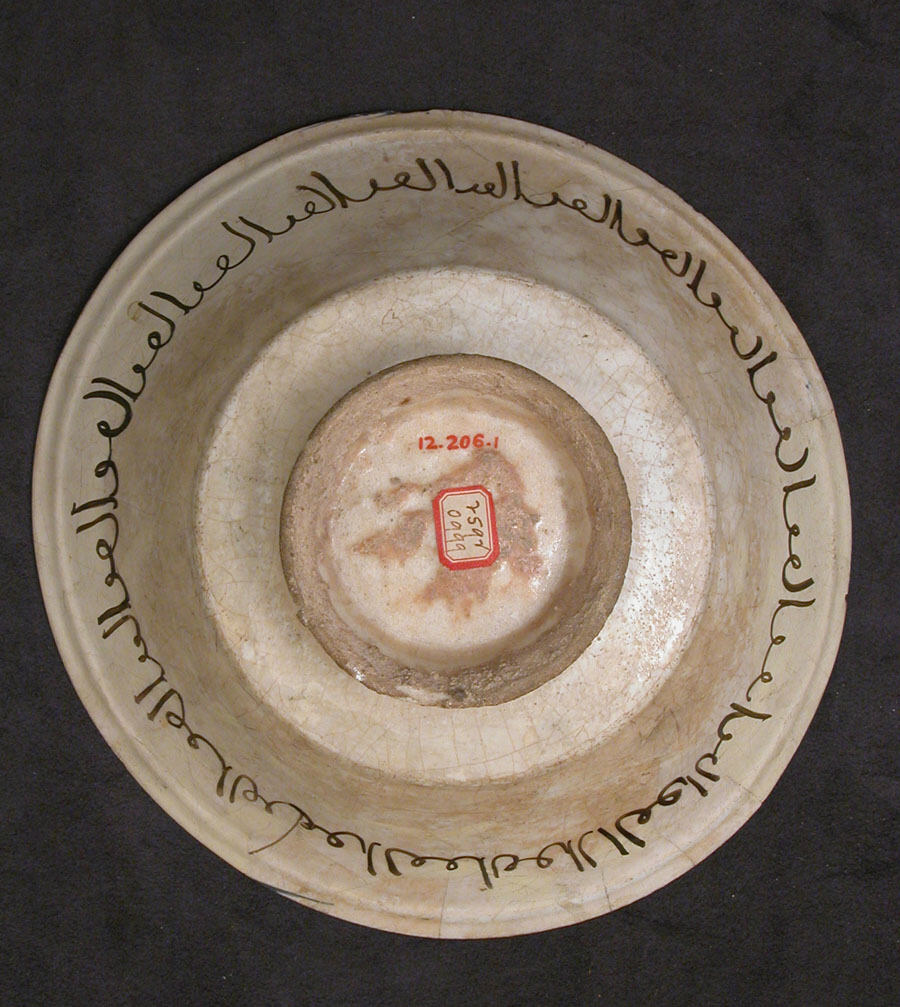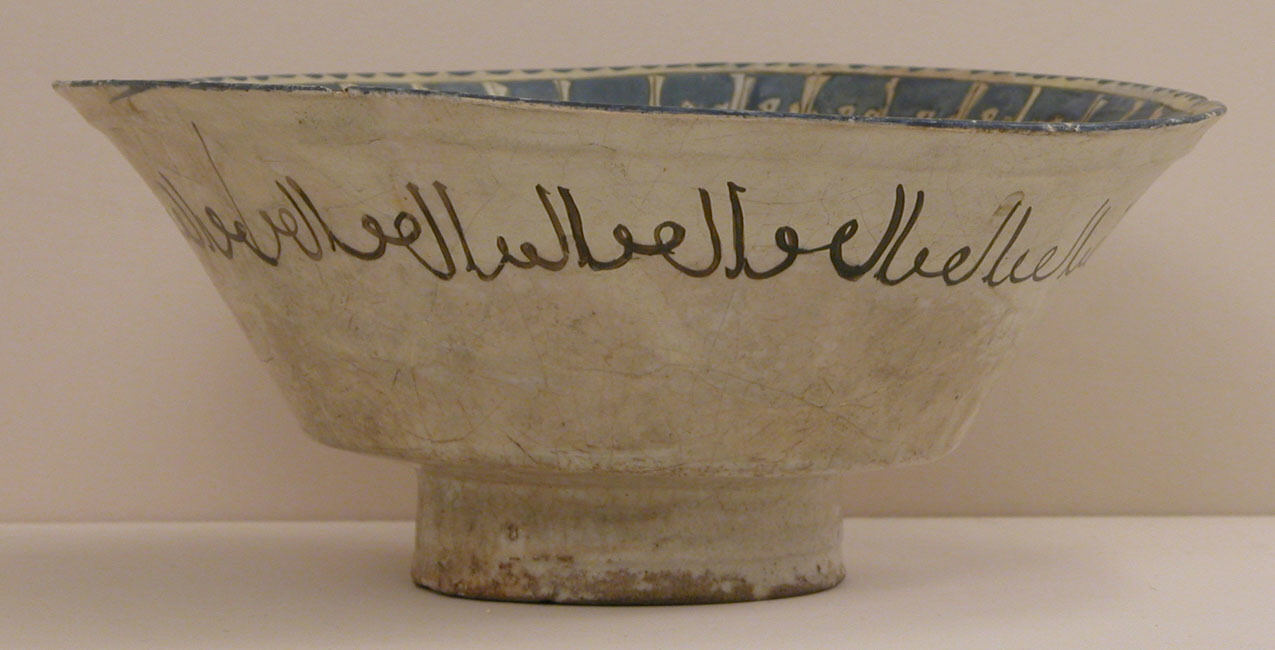Bowl
Not on view
Mina'i wares were called haft rang, or seven colors, because several colors were employed in their decoration. Not all the pigments were applied using the same technique, and gilding, as seen on this piece, was applied to enrich the object. The required steps made the production of objects like this bowl a long and risky process. This probably also explains the short life of the technique, known to have been employed only in the period from the last quarter of the 12th century to the first decades of the 13th century.
The central scene shows a rider at hunt, holding a falcon on one hand and chasing a running hare. The central scene is surrounded by a band of sphinxes. Both are typical of courtly images found on mina’i and on coeval luster wares.
Due to rights restrictions, this image cannot be enlarged, viewed at full screen, or downloaded.
This artwork is meant to be viewed from right to left. Scroll left to view more.




